
views
- To reduce splashback at the urinal, stand slightly closer and adjust the angle of your stream so you’re hitting the wall at less than a 45-degree angle.
- Try to stand close enough that your pee stream is still solid when it strikes the urinal. Streams that have broken up into droplets are more likely to splash.
- Aim for splash-reducing urinal mats or screens (if present). Don’t aim for the urinal cake itself, which is not designed to absorb urine or minimize splash.
Minimizing Urinal Splashback
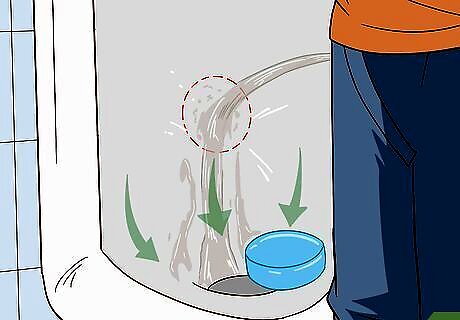
Hit the wall of the urinal at an angle less than 45 degrees. Change the angle of your stream so you’re not hitting the urinal dead on. The splashback will be worse the closer the angle is to 90 degrees (perpendicular to the back of the urinal). Instead, try to hit the urinal at a soft angle (less than 45 degrees, if possible). It may be easier to achieve a gentle angle if you aim for the sidewalls of the urinal (rather than straight at the back). This applies to regular toilet bowls, too. Hitting the side of the bowl at a hard angle can cause splashback.
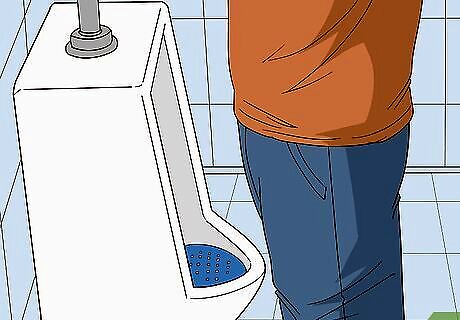
Stand close enough that your pee is still a solid stream when it hits the wall. Your urine stream breaks up into small droplets about 6–7 inches (15–18 cm) from the end of your urethra. These droplets create more splashback than a solid stream of urine. Position yourself close enough to hit the porcelain before stream breakup occurs and you will be in good shape. Splashback is greatly increased when your urine hits a surface at a sharp angle and from a great distance. In addition, your urine picks up a lot of velocity the farther you stand from the urinal, resulting in more splashback. There is no magic distance when it comes to how far to stand from a urinal. Each urinal is different, every person is different, and everyone's comfort level is different.

Aim for splash-reducing urinal screens (if present). Some urinal inserts and splash guards are designed to absorb the impact of your urine stream to reduce potential splash back. Shoot for these, especially if you can pee on one that bends upward or clings to the back wall of the urinal so you can hit it at less than 45 degrees.
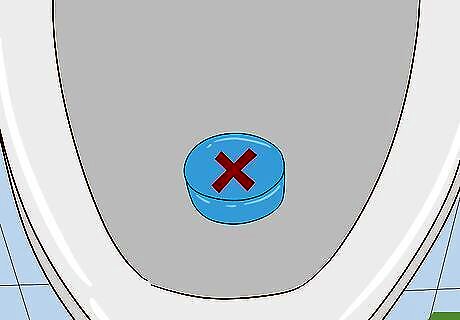
Do not aim for the urinal cake. Urinal cakes are designed to fight odor and bacteria and are often small and placed on the bottom of the urinal. They're not meant to be targets. If you hit them, they might create splashback and deflect urine spray in your direction. Some urinal cakes fight odor and germs with dichlorobenzene, a toxic chemical that can spread farther if you pee directly on the urinal cake.
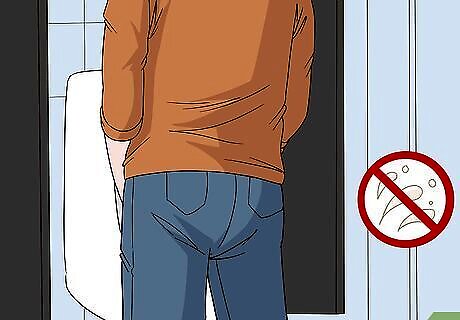
Avoid “shaking” too briskly afterward. When you’re finished, don’t shake your penis too quickly. This might cause drops of urine to hit the urinal, accidentally creating splashback even when you’re done peeing. The droplets might also fly through the air, potentially hitting another person or the floor. If you’re worried about dribbling, gently press upward on the urethra with your fingertips about 1 inch (2.5 cm) behind the scrotum. Keep the pressure up and slide your fingers down the length of your penis to release the last few drops.

Check the floor under a urinal for urine puddles before walking up to it. Oftentimes, the floor in front of the urinal will be wet from other people’s urine. Be aware as you approach the urinal so you don’t step in someone else’s puddle and unwittingly splash urine onto your shoes or legs that way.
Urinal Etiquette

Choose a urinal with privacy guards, if you can. Some (but not all) public restrooms have privacy guards (small partitions) between urinals to give you some solitude and shield you from other people’s splashback. Try to find a restroom that comes equipped with privacy guards for a more relaxing, private, and less splashy experience. When there are privacy guards, you don’t have to worry as much about which urinal to choose (although choosing one that’s not right next to someone else is still a good idea).
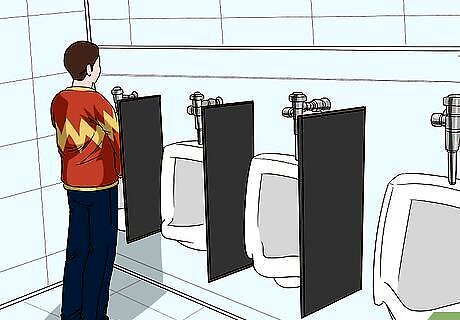
Pick a urinal at the end of a row rather than one in the middle. When using a public restroom, pick an end urinal next to the stalls, sinks, or a wall. This way, you’ll get privacy (and no neighborly splashes) on at least one side. It also leaves plenty of open urinals in a row so someone who comes in after you can choose one they’re comfortable with. In general, you’re most likely to get the most privacy if you choose the urinal farthest away from the bathroom door.
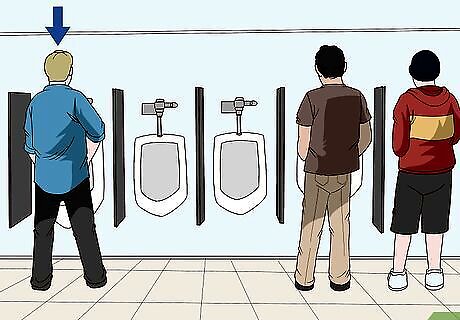
Or, select a urinal that has open urinals on either side if possible. Studies have shown that the closer you are to someone else, the more anxiety and difficulty you and that other person can have when it comes to peeing. So, try to use a urinal with open space around it (or at least space on one side) to make yourself and others comfortable. It is okay to stand and pee directly next to another person when the restroom is crowded and there’s no other urinal available. You’re not expected to wait in line or use a stall in these circumstances.
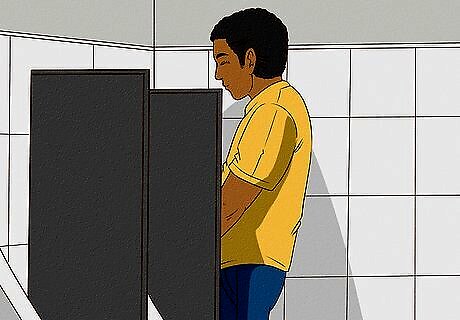
Look forward at the wall or down into the urinal, but not to the sides. Since people can be sensitive about who sees their private areas, keep your eyes looking up and forward to reassure them you’re not getting a peek (intentionally or accidentally). Or, keep your eyes down and fixed on your stream to make sure you’re aiming at a minimal-splash zone. This sensitivity is why it’s often most polite to leave an empty urinal between users when possible. Direct eye contact among strangers is often uncomfortable in a public restroom, especially at the urinals themselves.
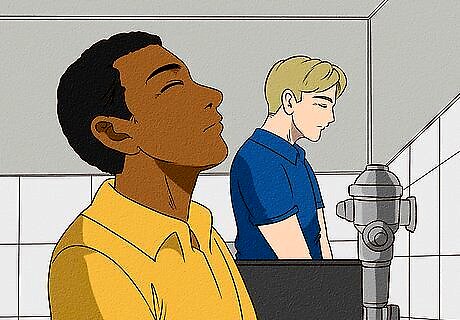
Limit small talk or don’t make conversation at all. People often prefer quiet and privacy when they’re urinating, even if they know you well. It’s perfectly fine to give a head nod to someone you know who walks up to the urinal next to you, or even say “Hey” briefly. Just save any real conversation or small talk for the sinks (or for when you leave the restroom). If you’re at work, it’s usually less awkward for the higher-ranking colleague to initiate a brief “Hey” than for a subordinate to do it.










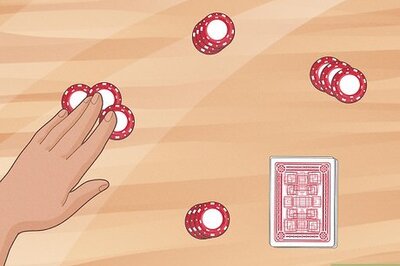









Comments
0 comment